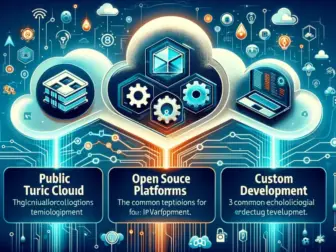Tag - environmental monitoring IoT
Revolutionizing Environmental Monitoring with IoT Technology
Environmental monitoring has always been a crucial aspect of ensuring the health and sustainability of our planet. Traditional methods of monitoring, however, have often been limited in their scope and efficiency. With the advent of Internet of Things (IoT) technology, environmental monitoring has been revolutionized, providing real-time data and insights that were previously unattainable.
IoT devices are now being deployed in various environmental monitoring applications, such as air quality monitoring, water quality monitoring, soil monitoring, and wildlife tracking. These devices are equipped with sensors that can measure a wide range of parameters, including temperature, humidity, air pollution, water pH levels, and more. The data collected by these sensors is transmitted wirelessly to a central database, where it can be analyzed and visualized in real-time.
One of the key advantages of using IoT technology for environmental monitoring is its ability to provide continuous, real-time data. Traditional monitoring methods, such as manual sampling and laboratory analysis, are often time-consuming and expensive, and can only provide a snapshot of environmental conditions at a specific moment in time. IoT devices, on the other hand, can collect data continuously and transmit it instantaneously, allowing for a more comprehensive and up-to-date understanding of environmental conditions.
Furthermore, IoT technology enables remote monitoring of environmental conditions, which is especially valuable in remote or hazardous environments where human access is limited. For example, IoT devices can be deployed in the deep sea to monitor water quality and marine life, or in forests to track wildlife populations and detect illegal logging activities. This remote monitoring capability not only improves the safety and efficiency of environmental monitoring operations but also enables the collection of data from previously inaccessible locations.
In addition to real-time monitoring and remote sensing, IoT technology also offers enhanced data analytics capabilities for environmental monitoring. Advanced algorithms and machine learning models can be applied to the vast amount of data collected by IoT devices to identify patterns, trends, and anomalies that may not be apparent through manual analysis. This data-driven approach can help scientists and policymakers make informed decisions about environmental conservation, resource management, and pollution control.
Overall, the integration of IoT technology into environmental monitoring has the potential to revolutionize the way we understand and protect our environment. By providing real-time data, remote monitoring capabilities, and advanced analytics, IoT devices are enabling more effective and efficient environmental monitoring practices. As we continue to face pressing environmental challenges such as climate change, deforestation, and pollution, IoT technology will play a crucial role in helping us safeguard the health and sustainability of our planet.
